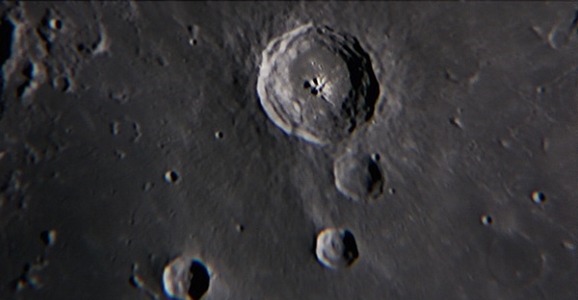The Moon Shows New Evidence Of Subsurface Water
 When it comes to space science, finding water on the moon has been something of a holy grail to astronomers and scientists for decades. While it would of course be more informative to stumble across a fully formed civilization that could just communicate all of the satellite’s secrets, nothing is so easy, and discoveries have been slow going. But now NASA‘s Moon Mineralogy Mapper (M3), onboard the Indian Space Research Organization’s Chandrayaan-1 spacecraft has identified the existence of subsurface magmatic water on the moon, which could lead to a better understanding of how it formed. The research was published in the journal Nature Geoscience.
When it comes to space science, finding water on the moon has been something of a holy grail to astronomers and scientists for decades. While it would of course be more informative to stumble across a fully formed civilization that could just communicate all of the satellite’s secrets, nothing is so easy, and discoveries have been slow going. But now NASA‘s Moon Mineralogy Mapper (M3), onboard the Indian Space Research Organization’s Chandrayaan-1 spacecraft has identified the existence of subsurface magmatic water on the moon, which could lead to a better understanding of how it formed. The research was published in the journal Nature Geoscience.
Amazingly, it’s the first time magmatic water has been identified from lunar orbit, and backs up the previous research done some months back on the moon rocks brought back from the Apollo missions. While it was once thought any water contained in those rocks was merely Earthbound contamination, the existence of hydroxyl (a molecule made up of one hydrogen atom and one oxygen atom) matches up with what the M3 found within the moon’s Bullialdus crater, which has a central peak comprised of rock that forms far below the lunar surface.
“This rock, which normally resides deep beneath the surface, was excavated from the lunar depths by the impact that formed Bullialdus crater,”said planetary geologist Rachel Klima of the Johns Hopkins University Applied Physics Laboratory (APL). “Compared to its surroundings, we found that the central portion of this crater contains a significant amount of hydroxyl…which is evidence that the rocks in this crater contain water that originated beneath the lunar surface.” I wonder how big of a shit fit everyone would have if they found bones inside the rock as well. Wait, I think I’ve got an idea for a screenplay…
“This internal magmatic water also provides clues about the moon’s volcanic processes and internal composition,” Klima said, “which helps us address questions about how the moon formed, and how magmatic processes changed as it cooled.” Whatever slammed into the moon in order to create that crater must have been a pretty badass planetary body all on its own, and we have it to thank for unlocking these clues that will hopefully be capitalized upon. Way to go, big rock!
The M3 was originally responsible for identifying water molecules on the moon’s polar regions, thought to be caused by solar winds hitting the surface. With this low-level water now identified, sample studies of different areas on the moon’s surface can be tested.
It’s no giant waterfall, but this is still a huge discovery and confirmation. The Pittsburgh comapny Astrobotic Technology is working on a solar-powered rover that will be used to drill for frozen lunar water, and there is some thought that once this evidence goes widescale that it will bring about a rush of privatized companies vying for superiority in commercializing the moon water. Because even when it shoudl be all about the science, it’s still all about the money.












